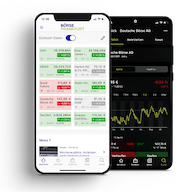Glossary
- DAX
- DAX future
- Day-Trading
- Dealer
- Delta (warrant)
- Derivatives
- Derivatives exchange
- Derivatives market
- Designated Sponsor
- Dilution of ownership
- Direct bank
- Direct listing
- Direct offering
- Directors' Dealings
- Discount broker
- Discount certificates
- Discount rate
- Distribution
- DivDAX
- Diversification
- Dividend
- Dividend guarantee
- Dividend stripping
- Dividend yield
- Double listing
- Downward movement
- Dual Listing (DL)
Direct listing
In a direct listing, also called a direct placement, direct listing or direct listing, the company does not raise capital. Instead, it applies for admission to the stock exchange while complying with the same transparency obligations as in an IPO. The share price is determined at the start of trading with the first stock exchange price according to supply and demand. In contrast, in a classic IPO, short for Initial Public Offering, companies usually issue new shares which they place with investors, accompanied by banks. As part of the pricing process with market consultations, a price range is proposed within which interested parties can subscribe to the shares before the IPO and which are then allocated at the issue price.
Frequently, it is venture capital financed technology companies that use a direct listing. It allows existing investors to sell their shares in the regulated market with transparent pricing. The companies have no capital requirements and save considerable commission costs of accompanying banks. The holders have no holding periods to observe and avoid dilution of their shareholding by the new shares. The disadvantage for the companies is price uncertainty and the risk of higher volatility. This type of IPO is more likely to succeed if companies are at least well known in their market segments. Investors can only enter direct listings when the shares are traded. There is no possibility for subscription gains.




